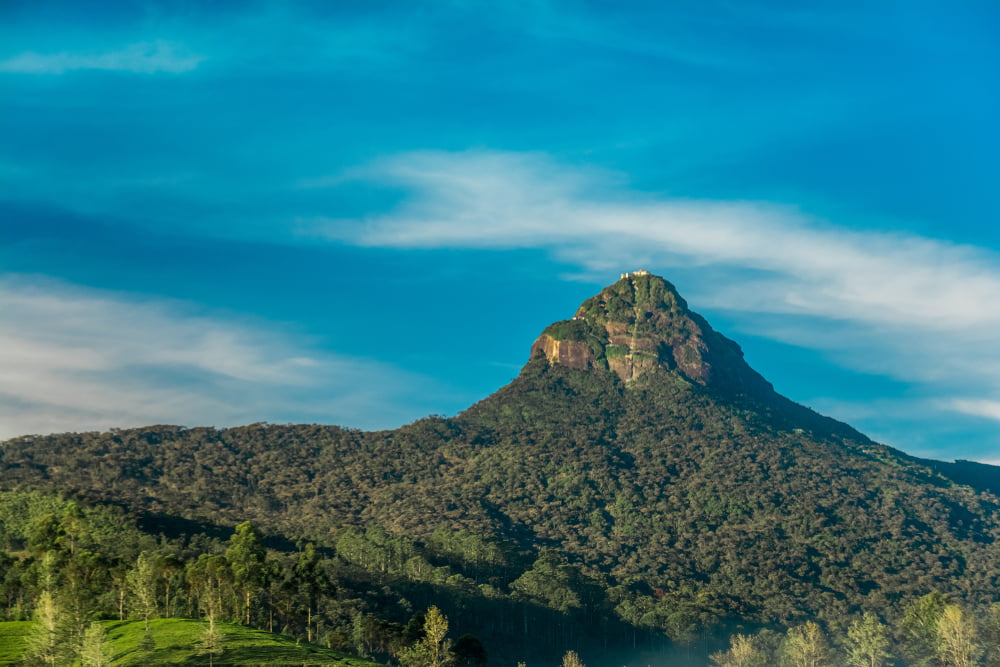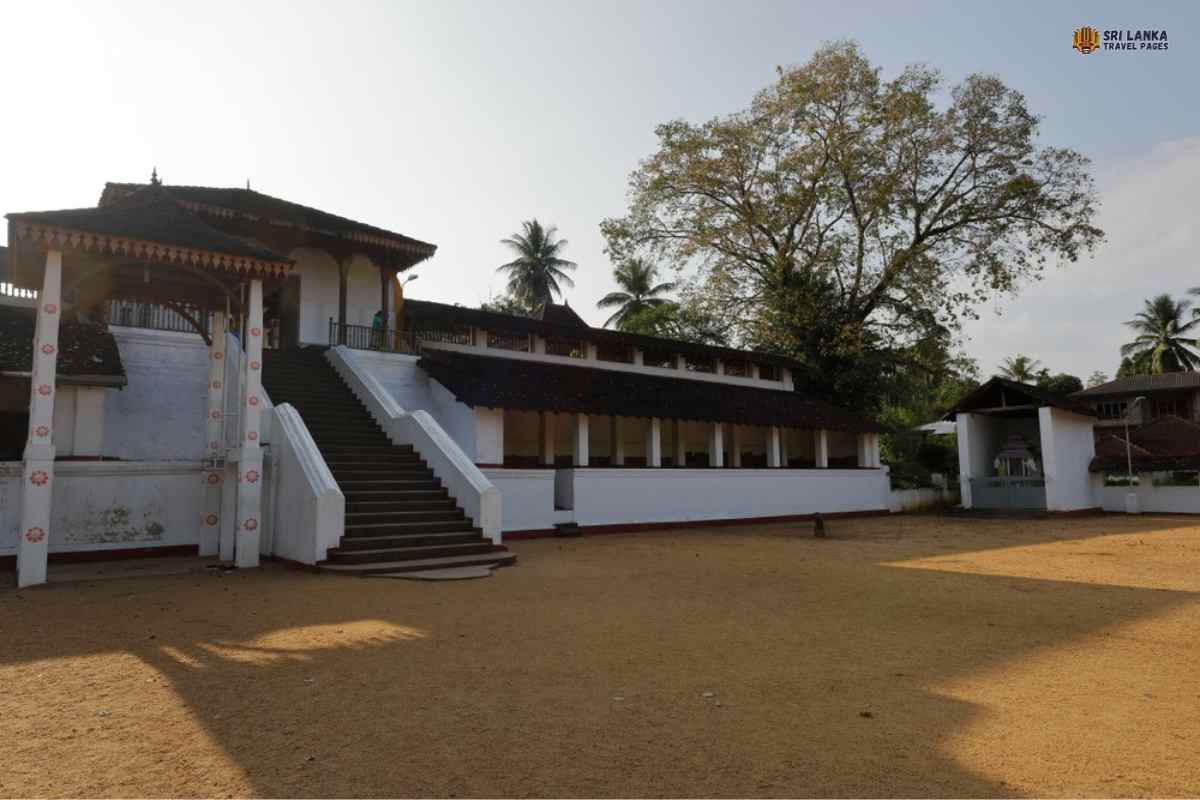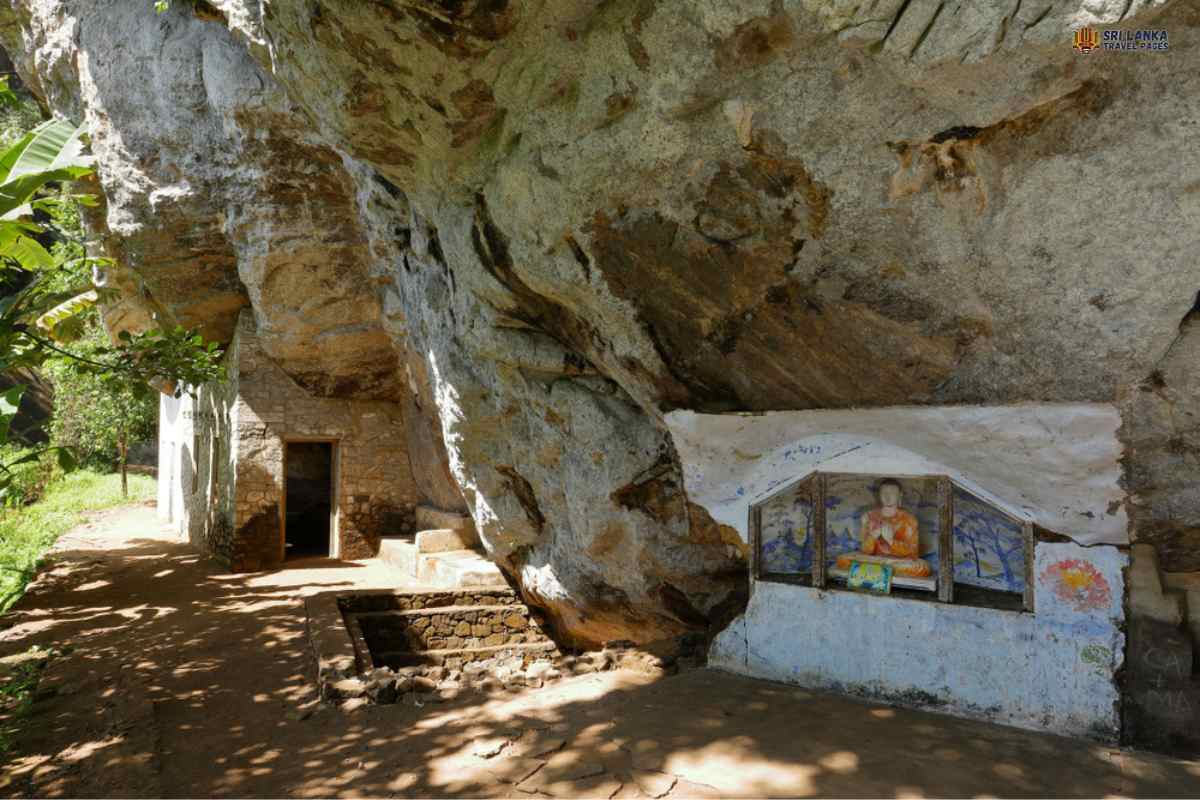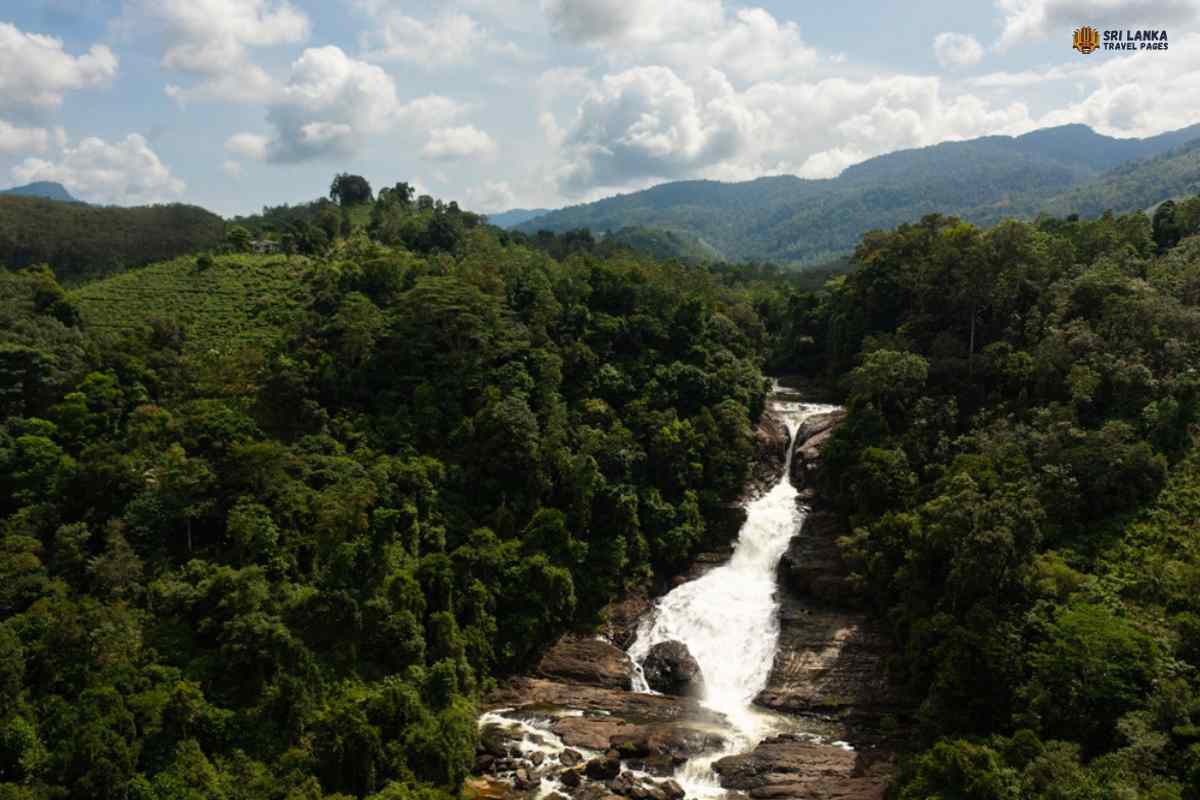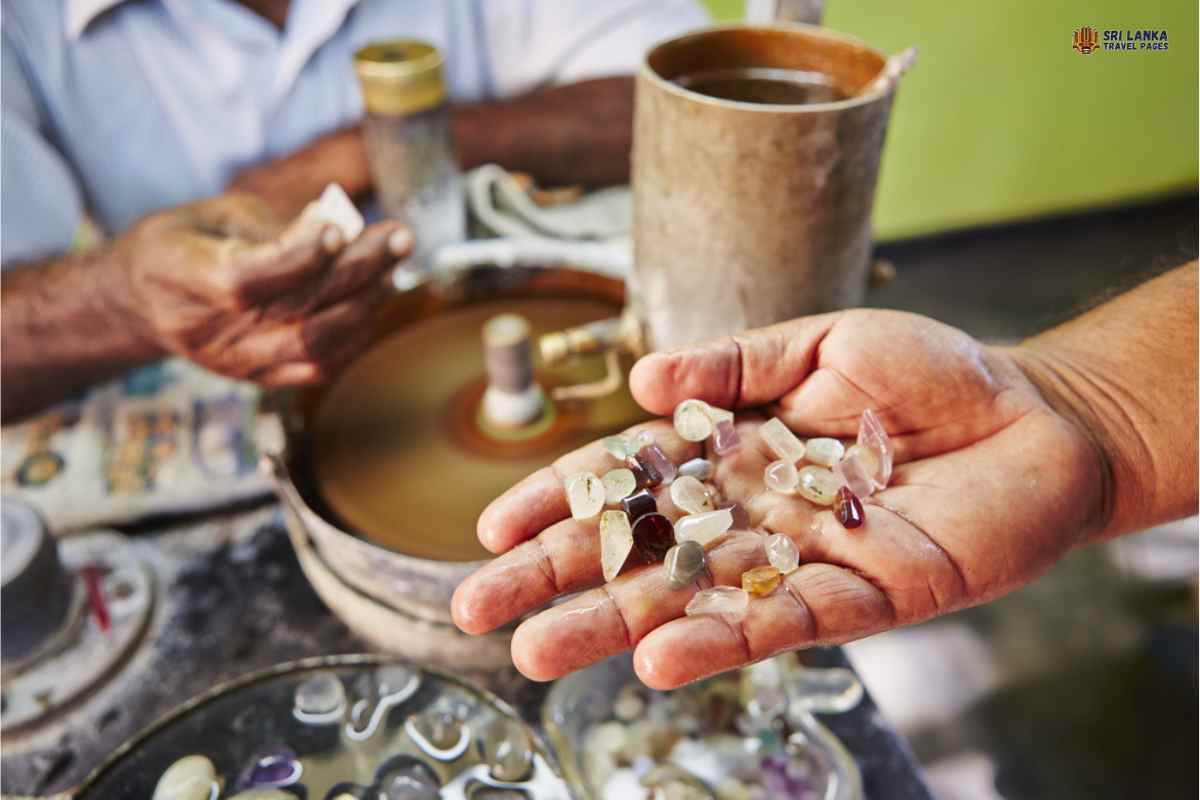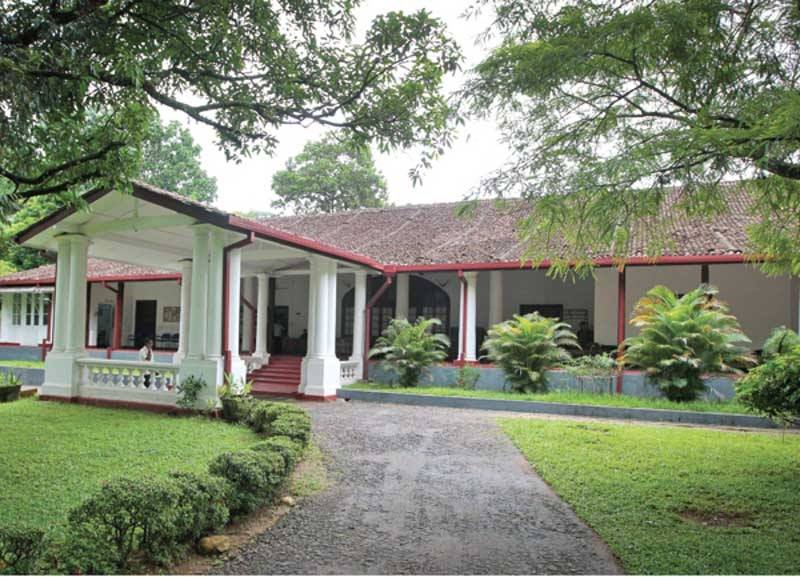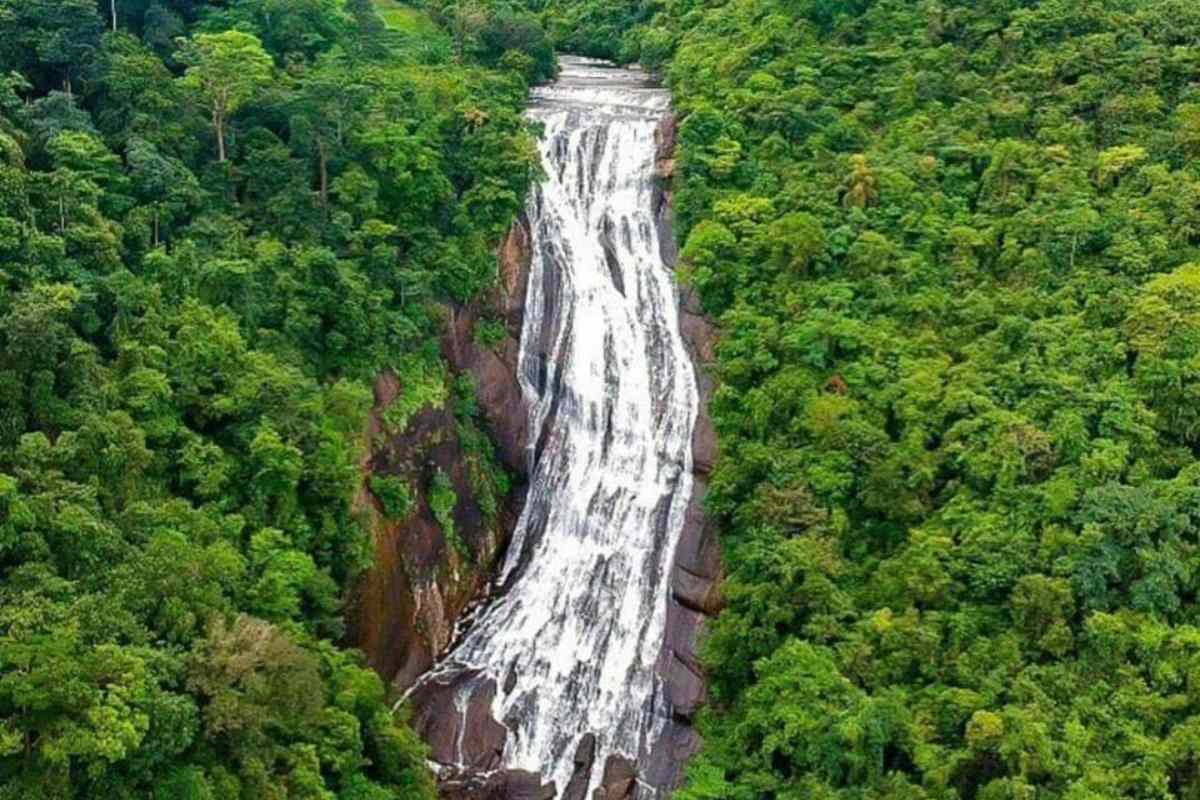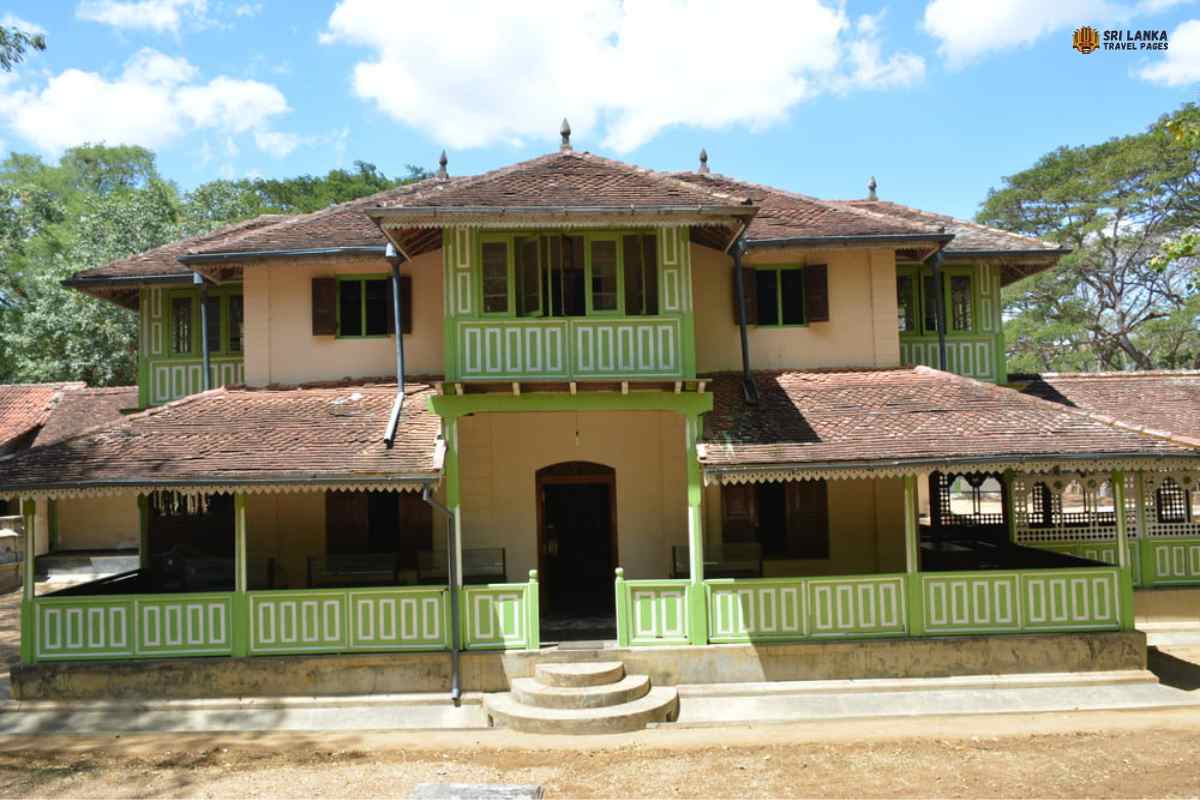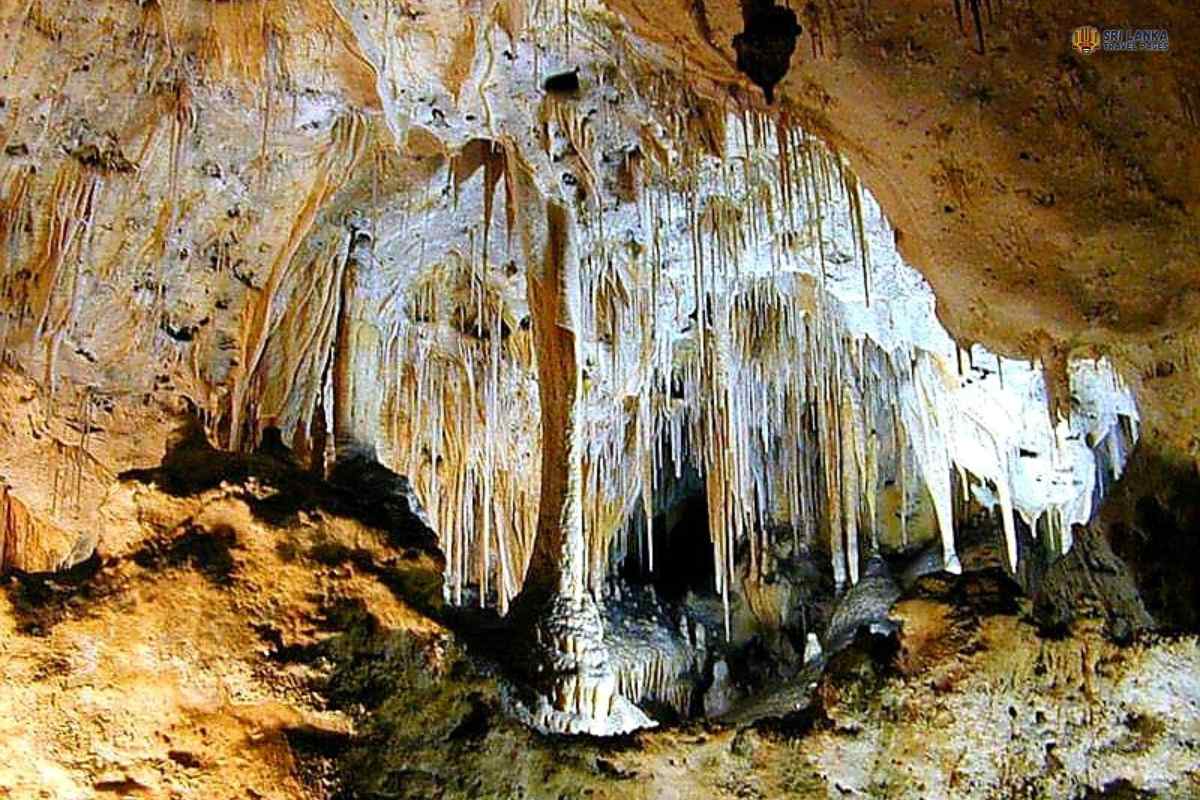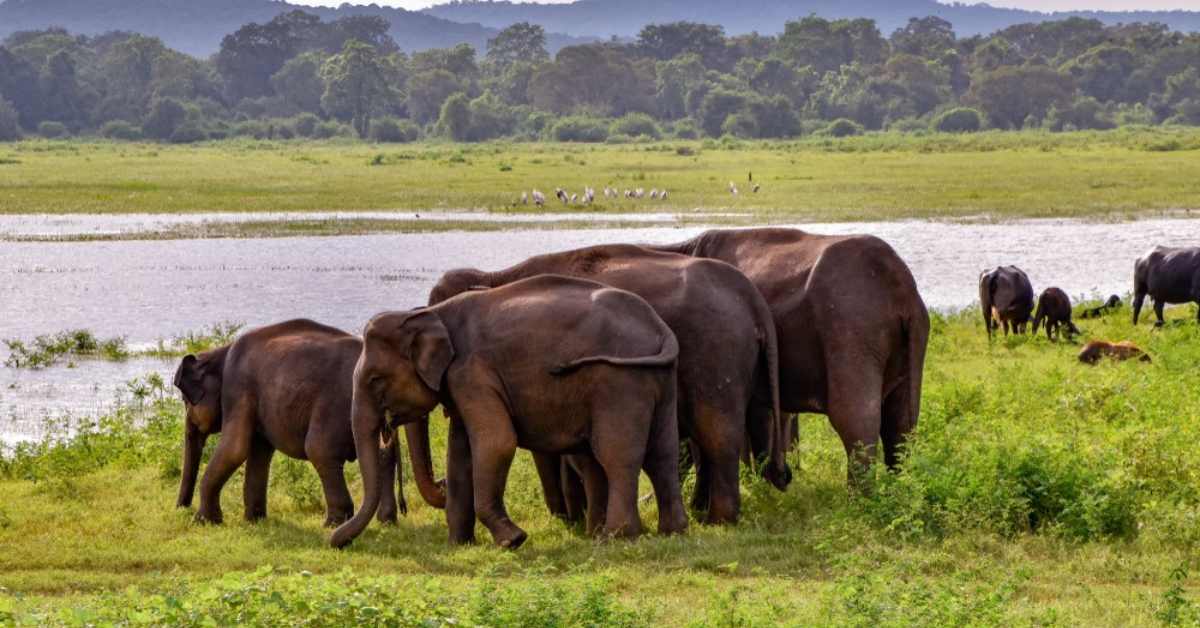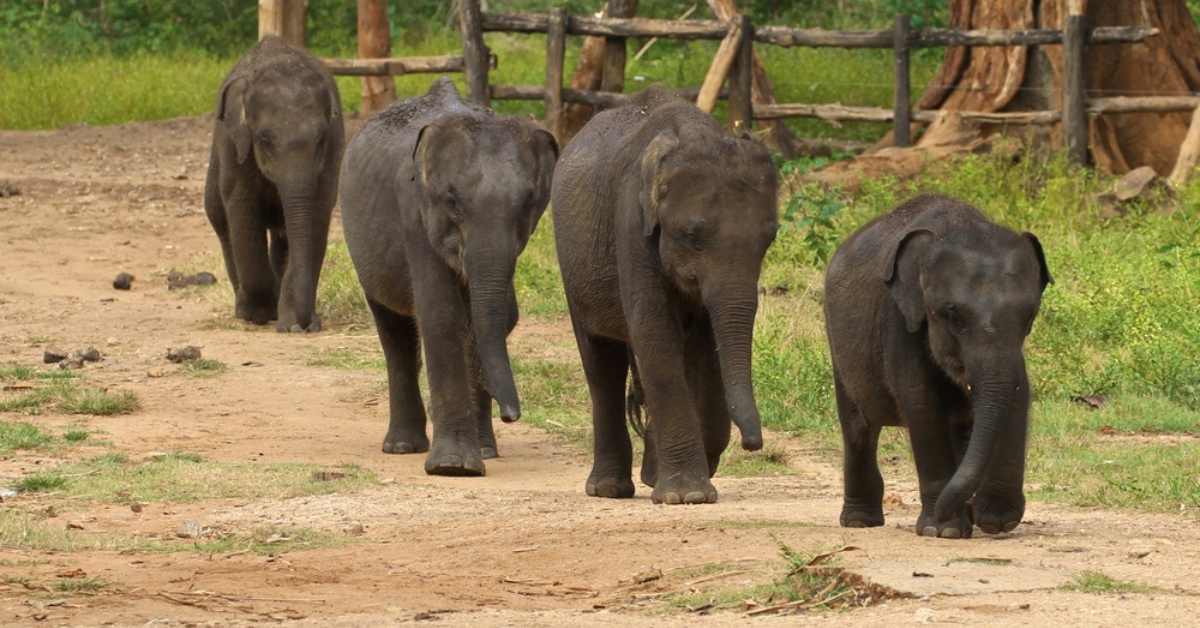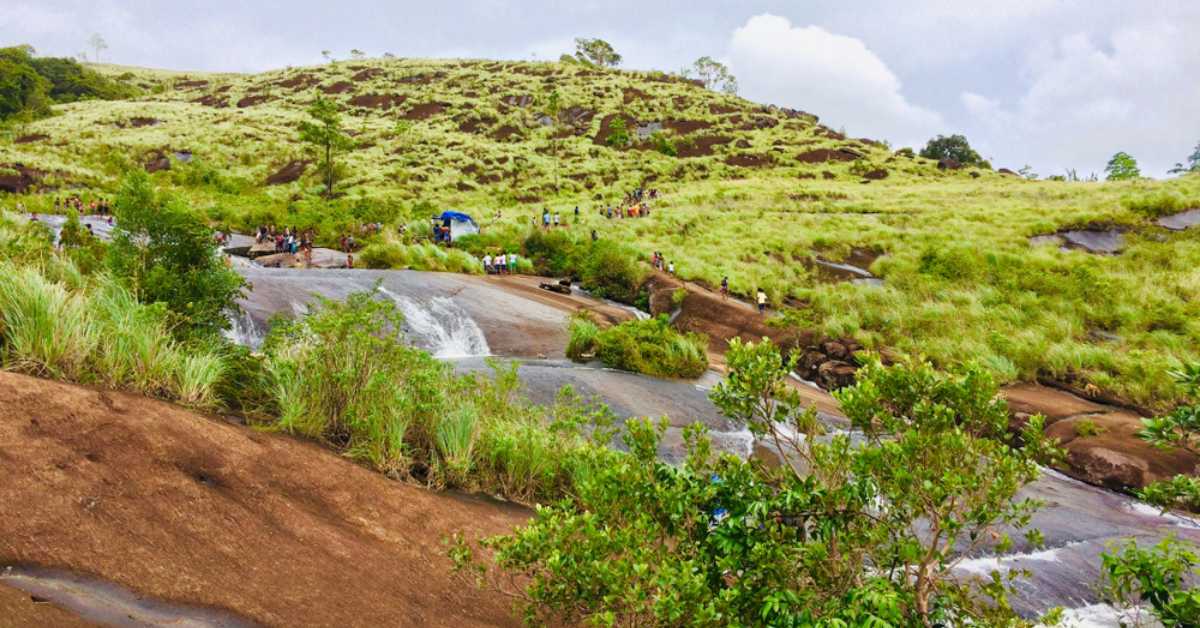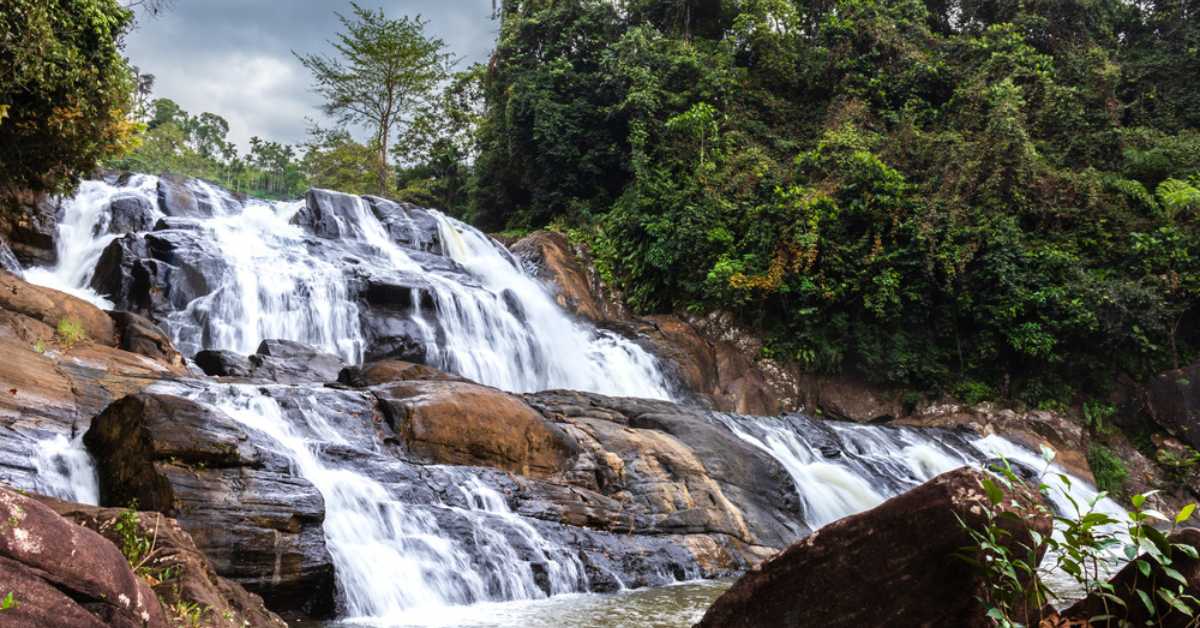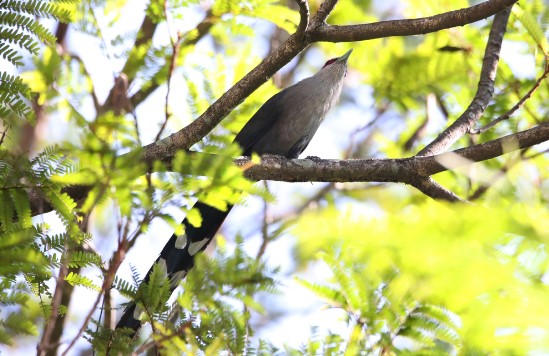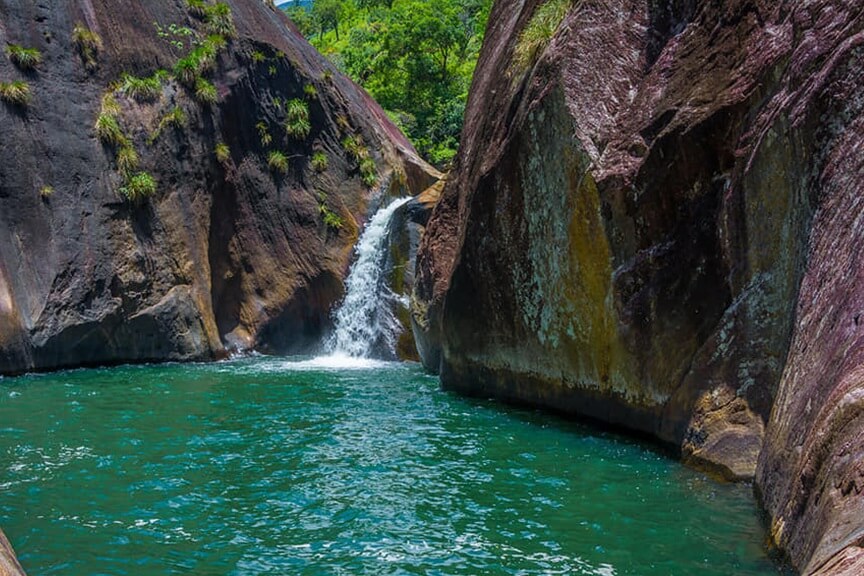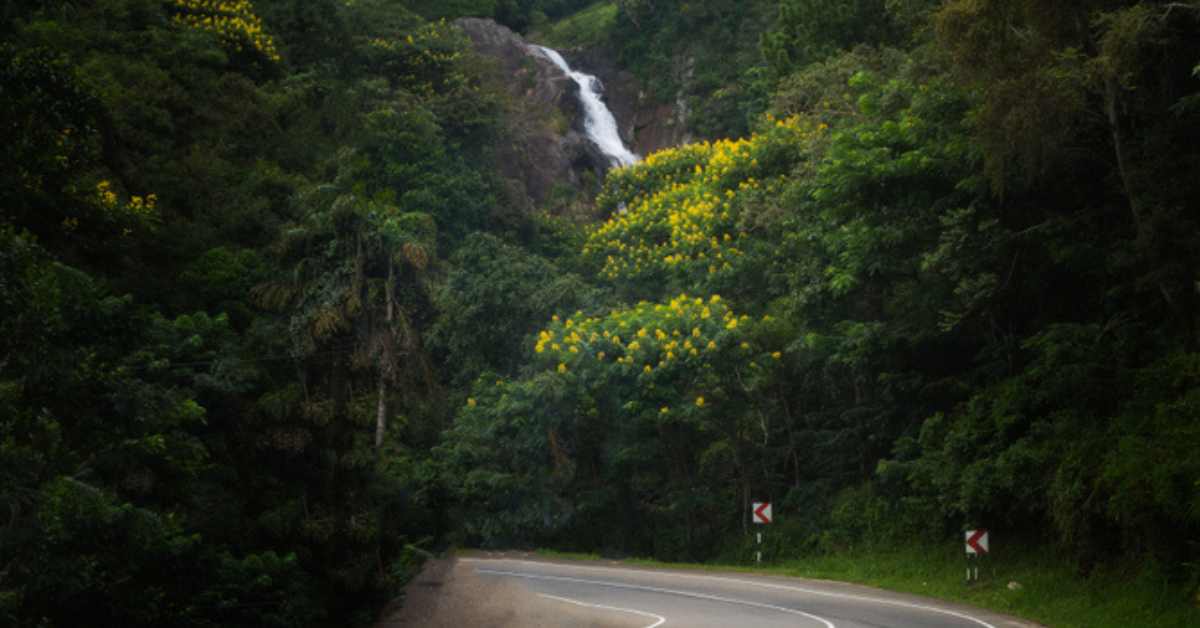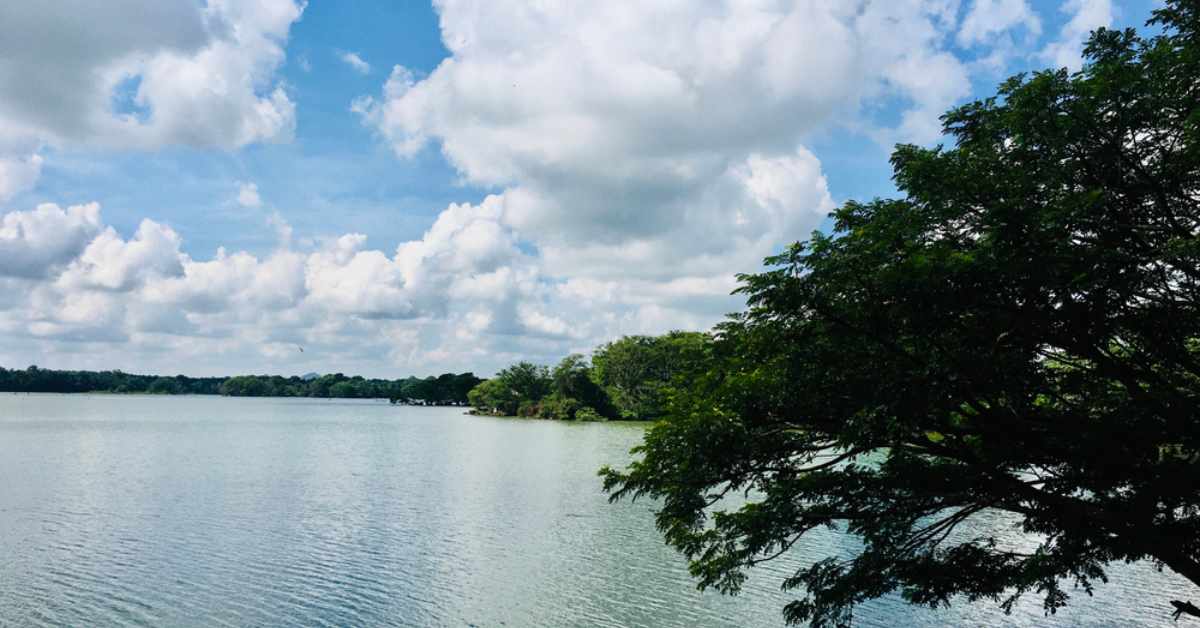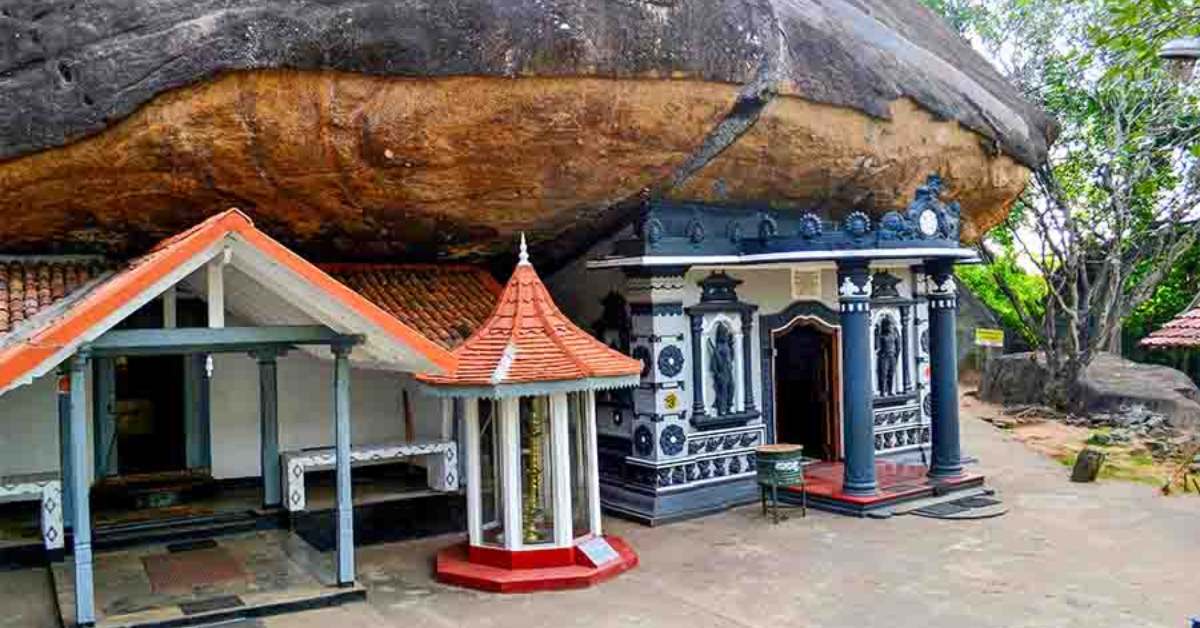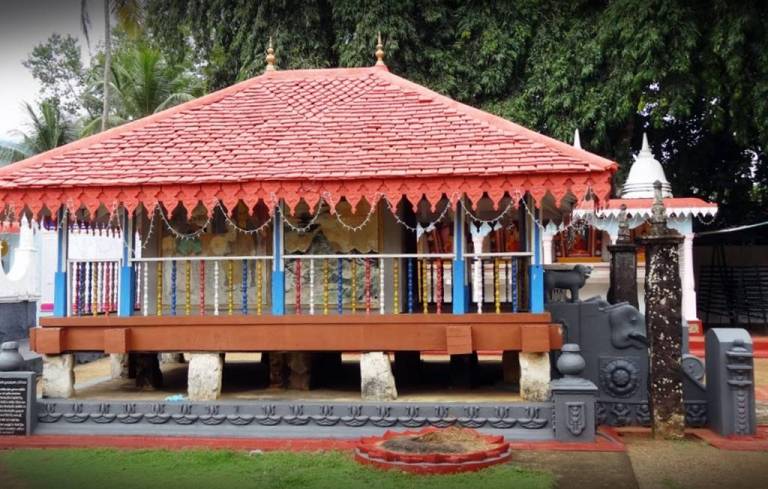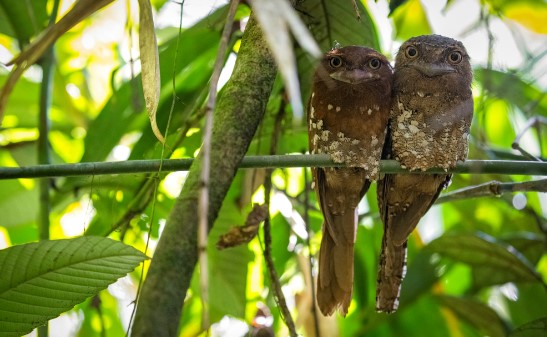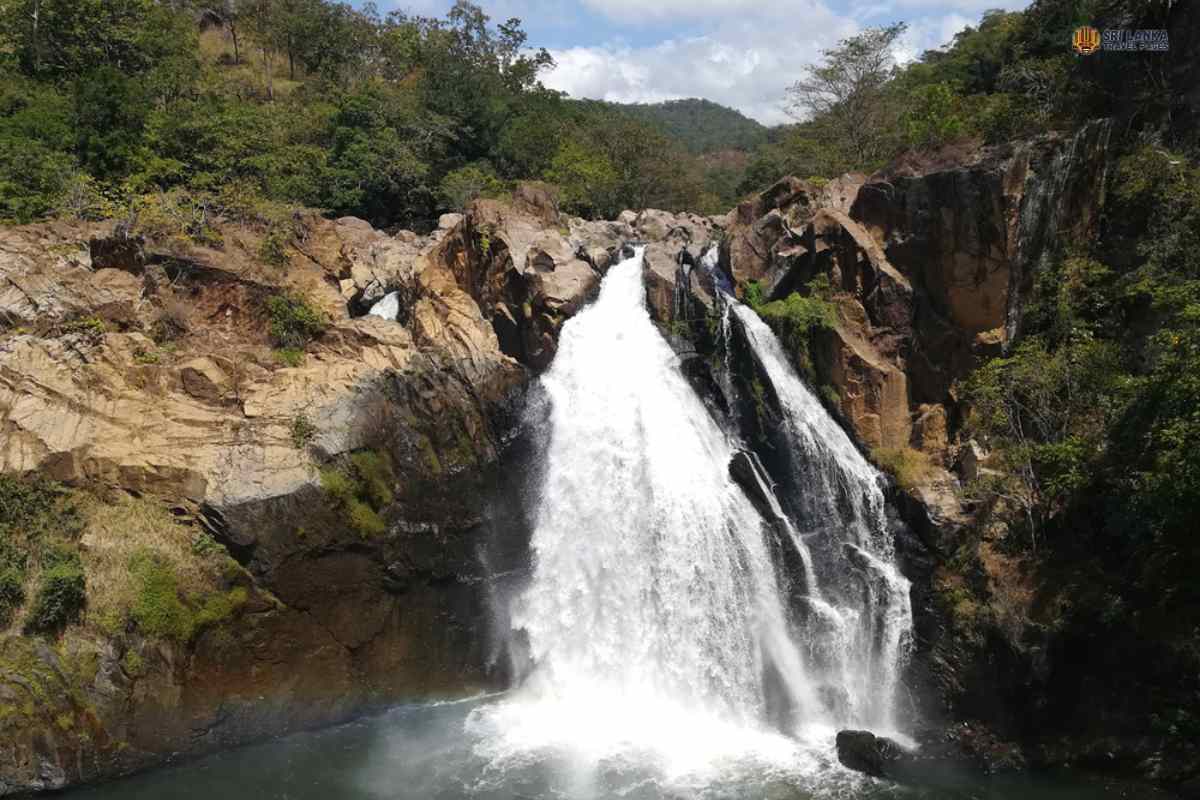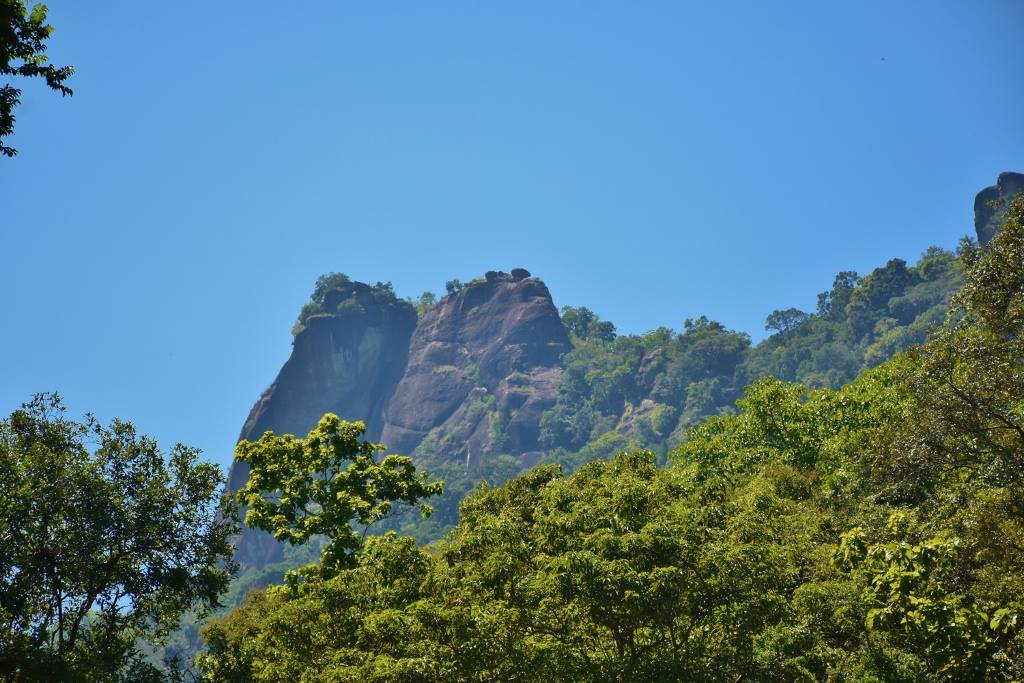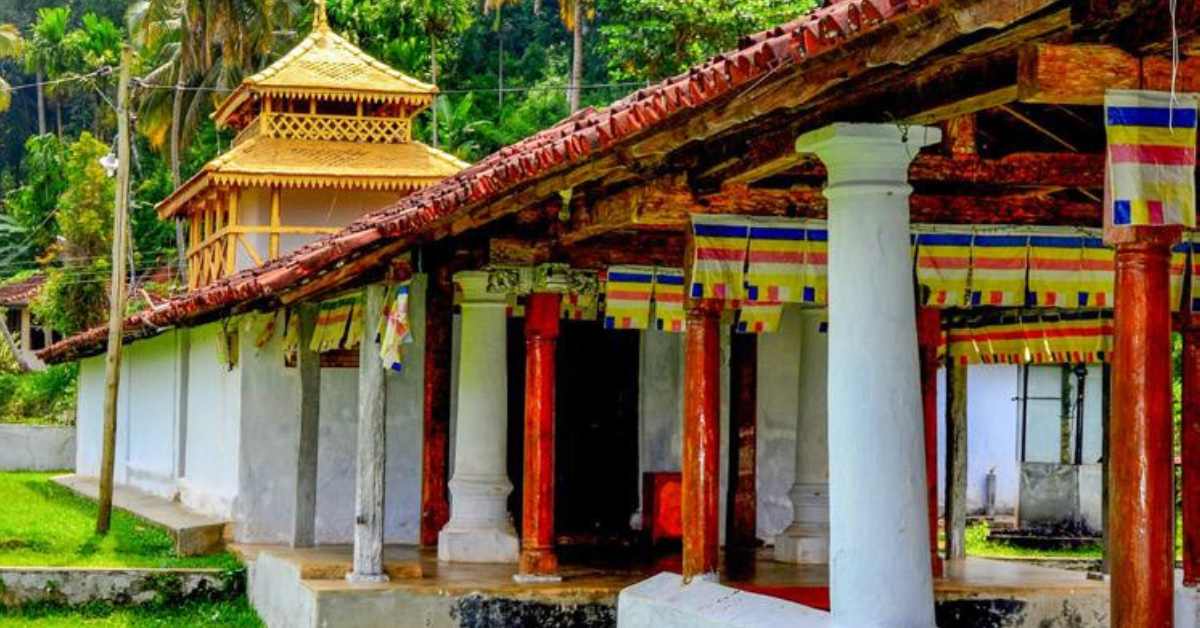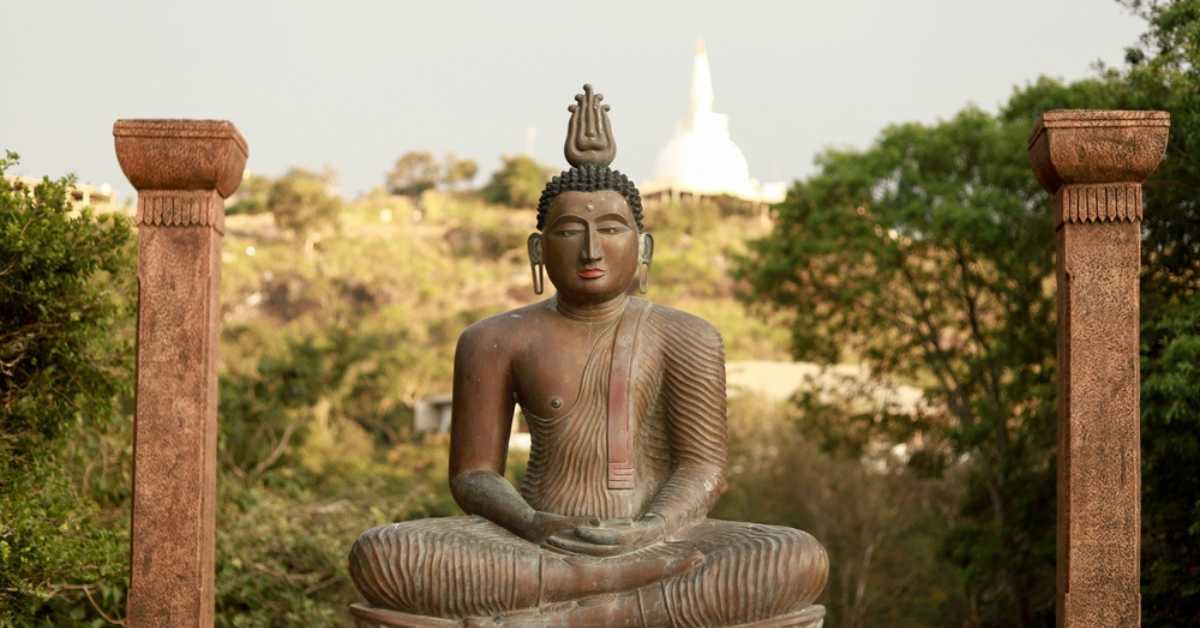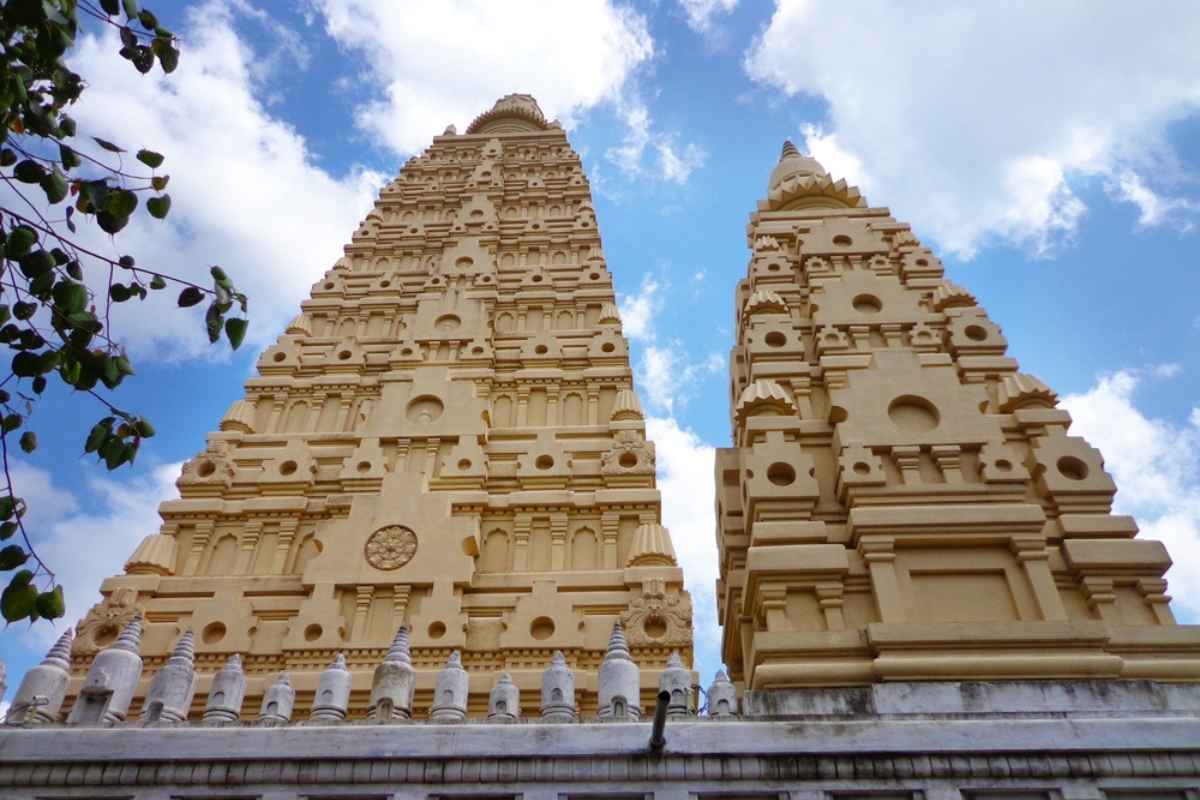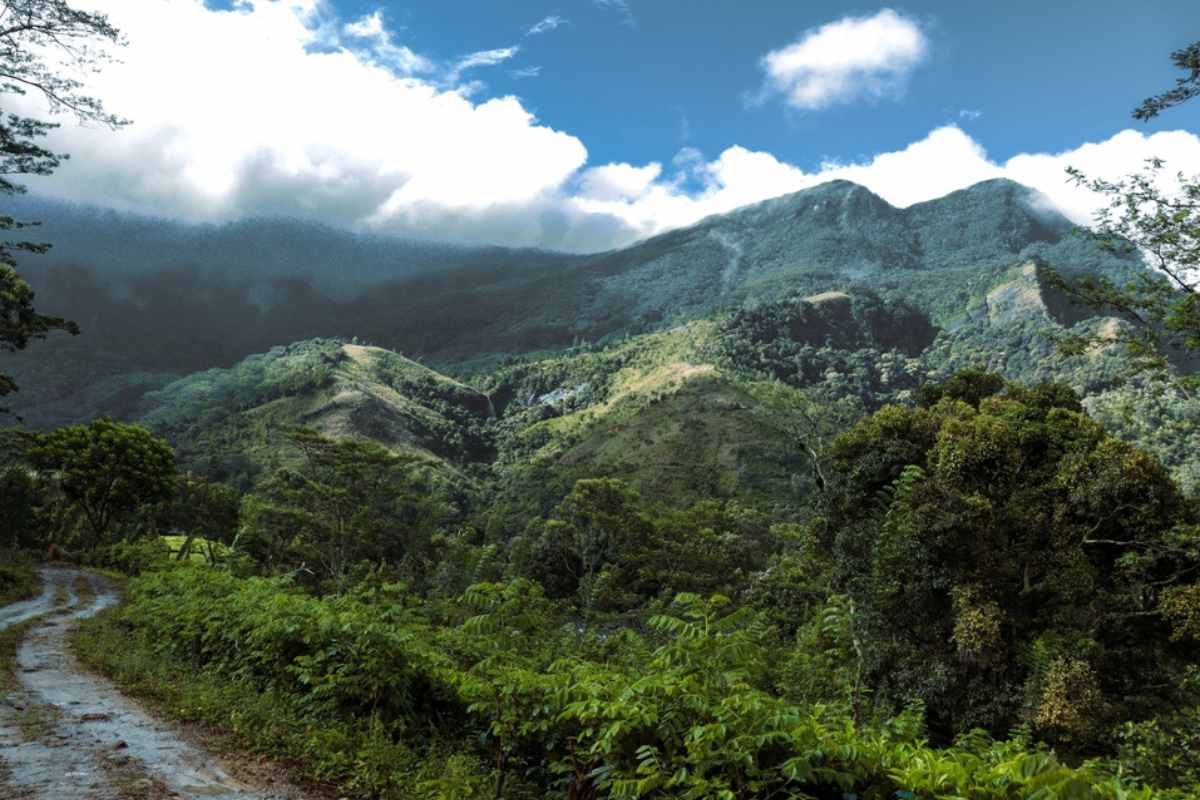
Ratnapura is located about 100 km southeast of Colombo and is renowned for being the gem trading centre of Sri Lanka. City named ‘Ratna’ (gems) and ‘Pura’ (town) combined. Besides gems, the Ratnapura area is rich with archeological sites, Rain forests, wildlife, waterfalls and many more Places to visit in Ratnapura that you can explore.
Tea and rubber farms surround this area, making a lush greenry panorama. In addition, paddy cultivations can be witnessed while fruits and vegetables are also produced as market yields. We have listed the 27 most stunning attractions to explore on your next journey to Ratnapura.
1. Adam’s Peak (Sri Pada)
Samanala Mountains, explained in the central highlands, is about 2243 meters high. Among all the sacred Buddhist sites in Sabaragamuwa, Adam’s Peak is earlier as it is believed that Lord Buddha’s sacred left footprint is imprinted thereon peak. About Mahawanshaya (a celebrated history of the dynasties of the kings of Ceylon), during his third visit to Sri Lanka, Lord Buddha set the sacred footprint on top of Adam’s Peak by Sumana Deva’s (God Saman) invitation who fell from spiritual lineage to be the mayor of the region at that time. He achieved an excellent state of fruition after listening to Lord Buddha’s preaching. From then on, he was worshipped, admired and respectfully titled “Sumana Saman Devi Raja” by the people of the Sabaragamuwa range. More Details
2. Sabaragamuwa Maha Saman Devalaya
Sabaragamuwa Maha Saman Devale is established in a charming and beauteous area that is not further than 2.5 km from the Ratnapura-Panadura route. Its premises are spread towards the riverside of Kalu, one of the famous rivers in Sri Lanka. Temples in the name of the Sumana Saman god (God Saman) were established after Polonnaruwa’s rule. The first temple was constructed on Adam’s Peak, and, as “Sahara Devale”, four temples were gathered in four directions, namely Sabaragamuwa Maha Saman Devale from the west, Mahiyangana Saman Devale from the east, Bolthumbe Saman Devale from the south and Daraniyagala Saman Devale from the north. In the Dambadeniya epoch, a minister of honourable erudite King Parakramabahu named “Aryakamadewayo” came to Ratnapura for gems and vowed Saman Devale to build a pagoda with a three-story mansion if he could treasure out gems. More Details
3. Batadomba Lena Cave – Ratnapura
The Batadomba Lena Cave Temple, also known as Diva Guhava archaeological site, holds testimony of occupancy from as early as 8,000 years BCE. It is one of the sites whose discoveries support the “Out of Africa” hypothesis, according to Professor Paul Mellars, a Cambridge University paleontologist. Among the evidence of Balangoda Man he unearthed at the Site were stone accessories defined as arrow – or spearheads and nicely shaped and perforated pebbles made from ostrich eggshell fragments. One piece of an ostrich eggshell, carved with a distinctive criss-cross motif, has also been discovered.
Batadombalena Cave has an area of approximately 15 m × 18 m × 24 m. More Details
4. Bopath Ella waterfalls – Kuruvita
Bopath Ella waterfalls are located near Kuruvita town Ratnapura, one of the popular attractions & one of the most impressive waterfalls in Sri Lanka. It has a frame similar to the Sacred fig or “Bo” tree leaf, which has this title. The waterfall is a significant tourist attraction in the country. Ancient myths assume that it is haunted and hides a treasure trove. Bopath Ella waterfall is 30 metres high. Waterfalls are set from the Kuru Ganga river, which is a tributary of the Kalu Ganga river. The trail to the waterfall is filled with some shops and stalls. More Details
5. Dhanaja gemological Museum
The only Gem museum in Ratnapura is one of the largest, most reputed and well-established business institutions selling gems and jewellery items. A vast collection of ancient Sri Lankan coins started in the 1st century, an Ola Books collection and many Antiques. All the gemstones and other mineral specimens are also found in Sri Lanka and are available at very reasonable prices. Dhanaja gemological museum is a registered museum at Ceylon Gem Cooperation and Ceylon Tourist Board.
6.National Museum Ratnapura
The attractive establishment known as “Ehelepola Walauva”, found at Ratnapura – Colombo road, was opened as a museum on 13th May 1988. It has exhibition chambers that contain prehistoric archaeological innovations, natural genealogy, geological, anthropological, and zoological relics and models associated with the Sabaragamuva region.
7. Kirindi Ella Waterfalls
Kirindi Ella waterfall is in Sri Lanka’s central highlands, only 6.5 km from the main junction in Pelmadulla, Colombo-Ratnapura-Batticaloa A4 main road. Kirindi Falls in the Ratnapura District of Sabaragamuwa Province is 19 km east of Ratnapura, 25 km west of Balangoda and 55 km north of Embilipitiya.
The rise of Kirindi Ella waterfall is 116 metres. The cascades into a deep pool, which is called Diyagathwala. People’s stories have it that a rock stairway guides to the bottom of the pool, where a treasure trove is mysterious. More Details
8. Gem Mining Experience
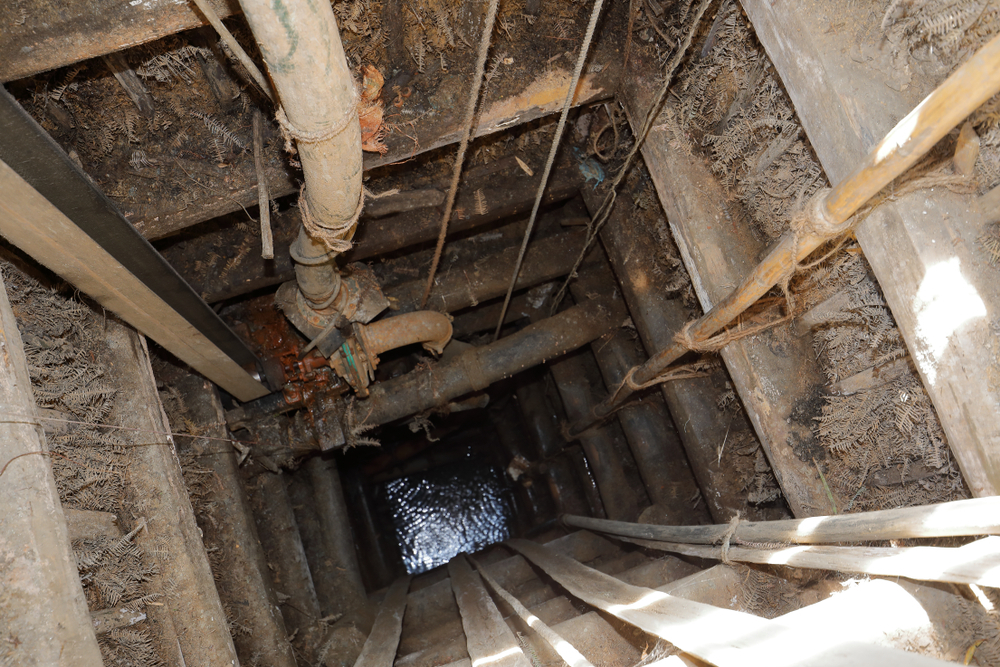
9. Maduwanwela Walawuwa
Maduwanwela Walawuwa is an excellent reference for getting for archaeological investigations. When you come from Colombo along Colombo- Rathnapura road, to go to this Site, you have to turn right into Ranchamadama road (1 ½ km away from Udawalawa junction), which commences at Panamura Junction.
Then it would help if you went towards Kolonna until you found the Mansion on your left. Maduwanwela Mahadisawe’s grandfather’s time dates back to 1700 A.D. He supplied weapons to king wimaladharmasooriiya. He is one Wijesundara Ekanayake who got the Maduwanwela Land grant as a present from the king to call him a white Sambur alive as a challenge. More Details
10. Waulpane limestone cave
Waulpane limestone cave is found in the Bulutota Rakwana range near Udawalawa and is an imperative archaeological site in Sri Lanka.
Waulpane limestone cave is placed in the Bulutota Rakwana range near Udawalawa and is an important archaeological site in Sri Lanka. This cave is over 400m long-drawn and could witness hundreds of thousands of bats, lizards, frogs and various insects and fish that have adjusted to the dark.
You access the cave and get the opportunity to analyze this unusual nature. About 300m underground, you will expose to the ancient world of ancient fossils in the cavern walls and a stream within the cave. Furthermore, an impressive waterfall is placed in the centre hence it is ideal for views. More Details
11. Udawalawe National Park
Udawalawe National Park is one of the leading and most significant national parks in Sri Lanka. This is an important protected area home to considerable flora and fauna, and also it is a virtual environment for Sri Lankan elephants and water birds. This national park lies on the border of the Uva and Sabaragamuwa provinces. The park is 165 kilometres [103mi] away from the capital city Colombo. Udawalawe national park was declared on 30th June, 1972, at a ceremony presided over by the ministry of shipping and tourism. [Government Gazette Notification No:14]. This park was done at the end of the Udawalawe Reservoir Project. The primary objective of designating it as a national park is to protect the catchment areas and create a refuge for wild elephants. A second reservoir, Maw Ara tank, was constructed between 1991 & 1998 in the national park. More Details
12. Udawalawa Elephant transit home
This Site is where abandoned and stranded baby elephants are looked after until they are fit enough to be discharged back into the wild. This elephant transit home is on 200 acres bound for Udawalawa National Park. It is crucial in the whole field of wildlife globally, as it is the leading and the only elephant transit home of this type established to maintain world elephant affluence.
Department of Wildlife Conservation announced this place and was set up on 6th October 1995 as the Department of Wildlife Conservation pilot plan under the numerous effort of Dr Nandana Athapaththu, the former deputy director of the Department. More Details
13. Patna Sliding Rock – Deniyaya
Patna Sliding Rock, recognized by the locals in Sri Lanka, is the latest counting to destinations uncovered here. This Rock is placed within the Patna Division in Enesalwatte Estate, controlled by Mathurata Plantations in Deniyaya, Sri Lanka.
The river flows over several large rocks with gentle slopes. At this spot, there is a shallow pool at the end of each Rock. Some natural water slides are developed on the Rock due to the calm flow of water over the velvety rock surface. The up-to-date Patna Sliding Rock has brought numerous local and foreign visitors, which has come about by the miracles of nature, The Rock is entirely secure, and the ponds are shallow. Therefore there is no danger of drowning or hurting oneself. More Details
14. Hathmala Ella Waterfall – Deniyaya
Hathmala Ella is 68th among the most eminent waterfalls in Sri Lanka. This is a beautiful seven-step waterfall in Deniyaya. You can get there by public transport. And there is a little walk to the fall. Easily accessible to a vehicle. On a rainy day, it is not recommended to visit there because flash floods may occur.
The waterfall is the Deniyaya Gongala mountain range, and the water moves onto the Gingaga River near Pallegama. Hathmale waterfall, 45m high & 10m wide, is the highest waterfall in the Gin gaga River and is split into seven segments (hath male). More Details
15. Kanneliya Rain Forest
This lower land forest, found about 36 km to the Northeast of Galle, expands to about 5306 hectares. It is well enriched with high biodiversity, and many endemic plants are preserved here. The Kanneliya Forest reserve has much endemic flora and fauna, with 17 per cent of lowland endemic floral species confined to this forest area and 41 species of endemic fauna living here. Tourists who expect adventure-based tourist locations must visit Kanneliya as it is a wonderful place for hiking, natural baths, waterfalls and beautiful landscapes. More Details
16. Pahanthudawa waterfalls – Belihuloya
The Pahanthudawa Falls has located about 2 km from the town of Belihuloya, 19 km off Balangoda on the A4 road. This is the ultimate one of a series of waterfalls formulated by Belihul Oya are waters into Samanala wewa Reservoir. This waterfall creates a tiny but deep pool at the bottom, which is of considerable depth and is in the shape of the wick of a lamp- which helps derive its title (pahana – a light). To reach the falls, one should go about 1.5 km on Ihala Galagama road, starting from the famous Belihuloya Resthouse and following the road heading to the mini-hydropower plant. Observing the falls is challenging as one must pass the stream and attend the steep valley upstream. More Details
17. Surathali Waterfalls
This waterfall is located between Halpe 169th km post and Marangahawela 170th km post in Colombo-Badulla main route. One who proceeds on this journey can experience the splendour of Surathali falls, which rains down from 62 m up. The origin of this fall lies in Horton Plains, Kadawath Oya, which begins from the higher region of the Bumton government estate in the Mahaweli range of mountains, creating this waterfall. After the film titled “Surathali” was filmed nearby this fall was popularized as “Surathali Falls”. More Details
18. Chandrika Lake – Embilipitiya
Chandrika Lake is a stunning lake located in Embilipitiya in the Ratnapura district. This lake is a famous attraction amongst local Travellers. Travellers and Villagers gather here to bathe and have a good time with family and friends. The lake reveals a pretty blue shade from its water. More Details
19. Sankapala Temple – Pallebadda
Sankapala Temple consists of ancestral dens, caves, and recently built shrines and structures. The history of this temple is proven back to the period of 161-131 B.C. According to the legendary stories, there were ten Hercules in king Dutugemunu’s troops. Giant Pussadeva held one of them whose duty was to inform the king’s battle victories to the subjects by blowing a conch shell. Furthermore, his symbol was the conch shell itself. Following the above, he built this great sacred place and became a Buddhist monk. Having won the Vijithapura war, this area had been offered to Pussadeva by king Dutugemunu to prioritize the war. According to legends, the conch shell he used at the “Vijithapura war” has been interred in a Hakgedi Gala (Conch shell rock) found on the top of the mountain. As a result, this temple has been listed the Sankapala temple. (Temple of conch shell) Regarding our excavations, the Archaeological departments of Sri Lanka have recognized many ruins with historical value, such as dens with inscriptions, stone pillars and shrines from the temple premises. More Details
20. Pelmadulla Rajamaha Vihara
The chronological Pelmadulla Rajamaha Vihara is a great glim that brought the light of wisdom to the modern era illuminating the whole of Sri Lanka. The esteemed historical incident (the third dharma conference) that happened 144 years ago is the foundation of the current educational and religious renaissance. Therefore, it is convinced without a second thought that full respect and honour of this great subversion must go to this monastery.
21. Sinharaja Rain Forest Reserve
Sinharaja rain forest can be considered an invaluable bio-diversity hotspot and a tropical evergreen hilly virgin rain forest located in the southwest lowland wet-eco region in Sri Lanka. Sinharaja is the most minor and only natural rainforest settlement in the low country. The dense nature covers over 11187 ha passing the borders of three Districts, namely Ratnapura, Galle and Matara. This biosphere reservation is located between north latitude 6º21´-6º27′ and east longitude 80º21´-80º37′. There are four passageways to pass into this wealth trove. They are Ratnapura – Weddagala route, Ratnapura-Rakwana-Sooriyakanda-Ilumbakanda road, Hiniduma – Neluwa road and Deniyaya-Pallegama road. However, the reserves of this rainforest must belong to Ratnapura District, and the main entry to Sinharaja also opens at Ratnapura.It has been a UNESCO World Heritage Site since 1988 under the title of the Sinharaja Forest Reserve . More Details
22. Duvili Waterfalls
This gorgeous cascade gives sobbing as a relaxed braid of beautiful hair from the top to a deep water receptacle at the mountain. Dispersed delicate driblets drift in a milieu as a cloud of dust. More Details
23. Budugala Raja maha viharaya
Kalthota intersection can be approached by wending 30 km from Balangoda town. After that, travelling about 45 km along Diyavinna road determines the southern area of Budugala Rajamaha Vihara, which has a historical significance and the archaeological main–house land can be sighted at a short distance.
This sacred land is located in Budugala ancient village alias Budugale Katuwa which lies adjacent to the Mahawalathenna plateau. This old Buddhist sanctuary, considered erected during the Anuradhapura period, has been under the local governance of kalathiththa (Kalthota Kingdom), situated at the terminal border of Rohana domain in the days of yore. More Details
24. Bolthumbe Suman Saman Devalaya
This historical field is located in Bolthumbe village, 14.5 km from the Balangoda – Pinnawala route, which belongs to Imbulpe Regional Secretarial Division.
The winsome location that inherits a legacy of 500 years is situated at the feet of Dethanagala Mountain and stands on a plateau in Mahawalathenna mesa. Folklore reveals that the war between Rama and Rawana happened at Dethanagala Mountain. Hence, a small devale has been erected to memorialize that particular conflict. This devale, inaugurated Bolthumbe Saman Devale by King Rajasingha I, is considered one of the four devales erected in the four directions encompassing Saman Devale at Sri Pada. More Details
25. Kuragala monastery complex
Kuragala monastery complex can be found following a 2.25 km range of the 14th milepost in the Balangoda-Uggal Kalthota road. Classical Buddhist inheritance has seen the light and received synchronous to ancient monasteries like Vessagiriya, Ritigala, Dimbulagala, Sithulpavuwa and Mihinthalaya.
With the few caverns notable for their religious, national, cultural and historical value, this cavern exists as a unique site second to none. According to legend, the old name of this giant Rock is “Kuharagala”, not “Kuragala”. Though Kuragala, in general, defines this Site, there are a couple of rock-apical, namely Kuragala and Hituwangala, which are designated by dint of its natural area with a natural concavity in the east slope of the Rock. This rock hole is 5-6.5 m deep and wide enough for two personalities to go in at once. More Details
26. Rathganga Viharaya (Punchi Dambadiwa)
Rathganga Viharaya, also known as “Punchi Dambadiwa” or “Asoo Maha Shravaka Budhuraja Maha Vihara,” is a peaceful, spiritual haven at Sripadha’s feet, tucked away in the Ratnapura District. It’s about 7-8 km from Ratnapura to Rathganga Viharaya, passing through foggy woods and undulating hills. The location provides a peaceful haven for travellers and pilgrims alike, and its natural beauty highlights its sacredness. More Details
27. Dethanagala Mountain
Dethanagala Mountain is a unique two-peaked mountain in Sri Lanka that is a great place to go climbing. Its name comes from the fact that, from a distance, it looks like a woman’s breast. This name emphasises its unique natural shape. The mountain is very tall and forms the border between the Samanala Range and the Horton Plains. The tallest peak is 1858 metres high, and the shortest peak is 1837 metres high. Balangoda and Dethanagala is a difficult mountain hike in Sri Lanka that gives you the best view of this interesting feature. On the Balangoda-Hatton road, which is about 40 km from the city, you can see the mountain from Balangoda town. People who like to hike in Sri Lanka don’t go on this trail as often because it is notoriously hard. More Details
Suggested Read : 32 Places to Visit in Nuwara Eliya

Ravindu Dilshan Illangakoon
As co-founder and Head of Content at Sri Lanka Travel Pages, I ensure that every blog post we publish is AMAZING.
Hiriwadunna Village Tour: A Guide to the Ultimate Tour Experience
Are you seeking a unique travel experience that blends nature, culture, and adventure? Then, look…
Best Museums in Down South Sri Lanka
Down South Sri Lanka is a treasure trove of history and culture, offering a captivating…
31 Best Places to Visit in Colombo
Colombo has become a popular visitor hotspot endeavouring various social, historical also nightlife attractions. Colombo…

